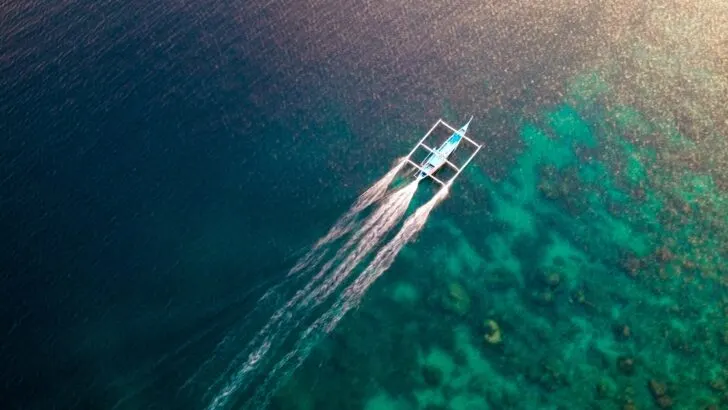Consider diving Anilao your next bucket-list activity if rummaging for nudibranchs and critters on the sea floor is high among your interests.
Located on the island of Luzon, a couple of hours’ drive south of Manila, Anilao Batangas has gained a reputation as the Philippines’ nudibranch capital – and rightly so.
As one of the easiest Philippines scuba diving destinations to reach from Manila, the Anilao diving scene has become one of the greatest in the archipelago.
Alongside its impressive nudibranch population, Anilao is also best known for its exceptional muck diving. It is firm competition for the Lembeh Srait in Indonesia and Mabul Island in Malaysia, often ranking among the top three destinations in the world according to experienced muck divers.
It’s also a popular destination for night dives and blackwater dives, as nighttime is when all the best critters and larvae come out to play.
People began scuba diving in Anilao in the 1970s when the area was merely a mountain covered in tropical green plants. Skip to today and there are handfuls of dive resorts in Anilao.
That’s why so many people like to call Anilao the first frontier of diving in the Philippines. Coron, Moalboal, and the Tubbataha Reef came later on.
In my guide to diving Anilao, I will provide you with all of the information you need to start your Anilao scuba diving trip, including what you can see, the best dive sites, the best dive resorts, and simple things such as how to get there.
Disclosure: This post includes affiliate links. If you decide to click through and make a qualifying purchase, I will receive a small commission at no extra cost to you – thanks for your support.
QUICK INFORMATION
Average annual water temperature: 25-27 °C
Average visibility: 40-50 feet
Average air temperature: 27 °C
Best dive sites: Secret Bay, Twin Rocks and Anilao Pier
Dive types: Standard, muck, night or blackwater dives.
Common sea life: Nudibranchs, critters, octopus, and small fish.
If you don’t want to travel to Anilao on your own, consider taking a full-day Anilao diving package from Manila to save you the travel time.
Where is Anilao?
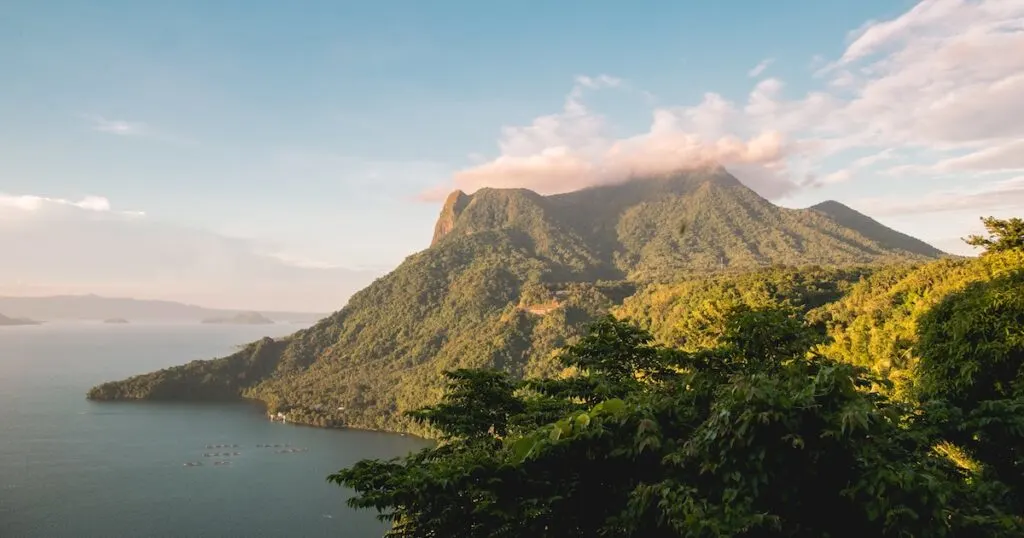
Batangas, the Philippines
Anilao is a couple of hours’ drive south of Manila, the capital of the Philippines archipelago in southeast Asia. It’s on the island of Luzon, which is the largest island in the Philippines.
Technically, Anilao is simply used as an umbrella term for dive sites in the municipality of Tingloy, Mabini and Bauan. It’s the easiest way to refer to the scuba diving destination.
Some may also call the area Batangas Bay, which is where many of the best dive sites in Anilao are located.
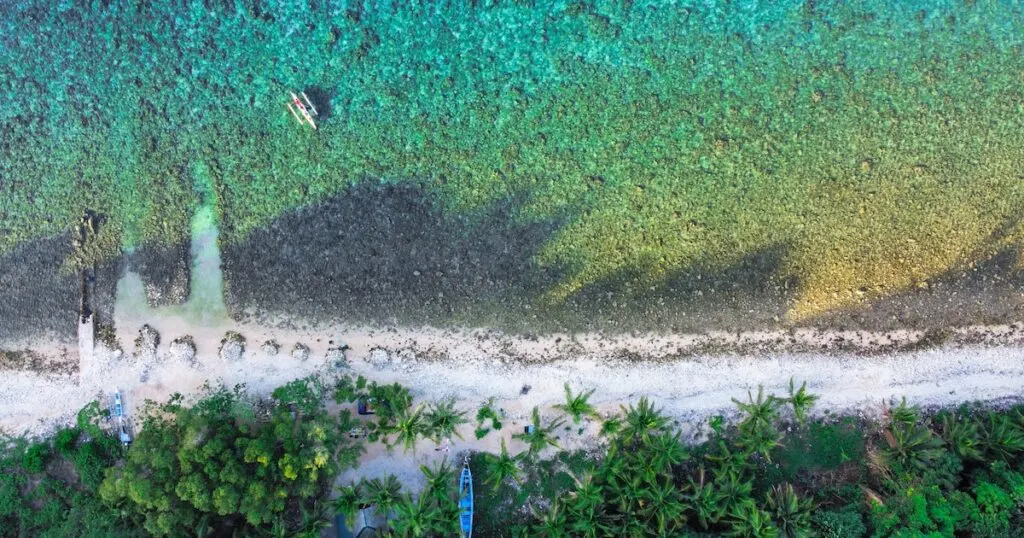
Anilao is part of the province of Batangas and very near to the Verde Island Passage, a strait between the islands of Luzon and Mindoro which has 1,700 fish species and 300 coral species. The passage is well-known for being an area of marine biodiversity.
Anilao is also an hour’s boat ride from Puerto Galera, on the island on Mindoro, which is just one of three places in the world which was recognised as a Man and Biosphere Reserve by UNESCO in 1973.
There are three main islands in Anilao:
- Maricaban Island
- Caban Island
- Sombrero Island
Tip: You can find some of the cheapest flights to Manila with AirAsia. I always check the AirAsia website directly before looking elsewhere.
What Can You See While Diving Anilao?
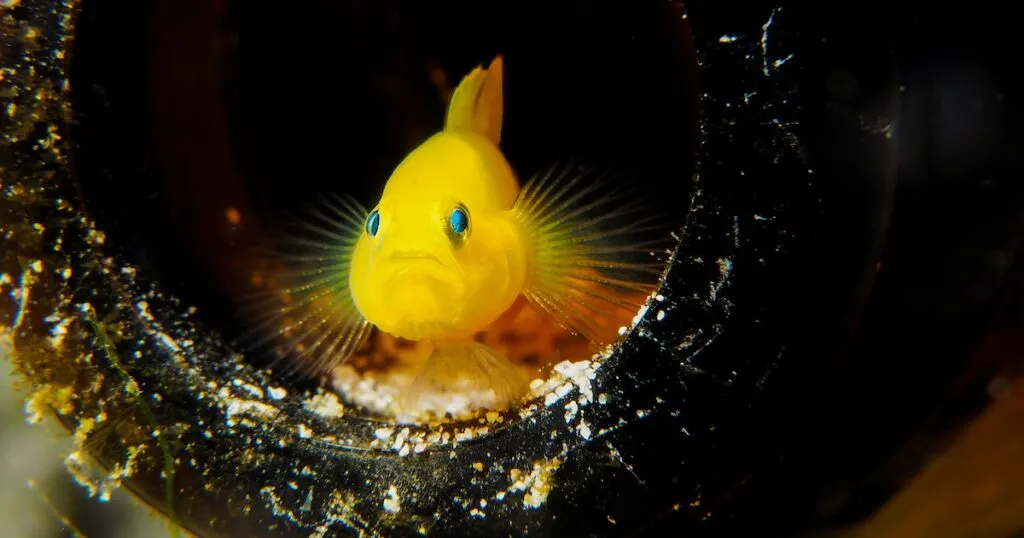
Diving Anilao will get you up, close and personal with a range of sea life.
The bay features hard and soft coral reefs populated by small tropical fish and the occasional larger schools of jack or tuna. However, Anilao’s nudibranchs and critters are its best attractions.
Nudibranchs are a slimy type of sea slug with no shells or bones, incredible for macro photography and often displaying mind-blowing patterns and colours.
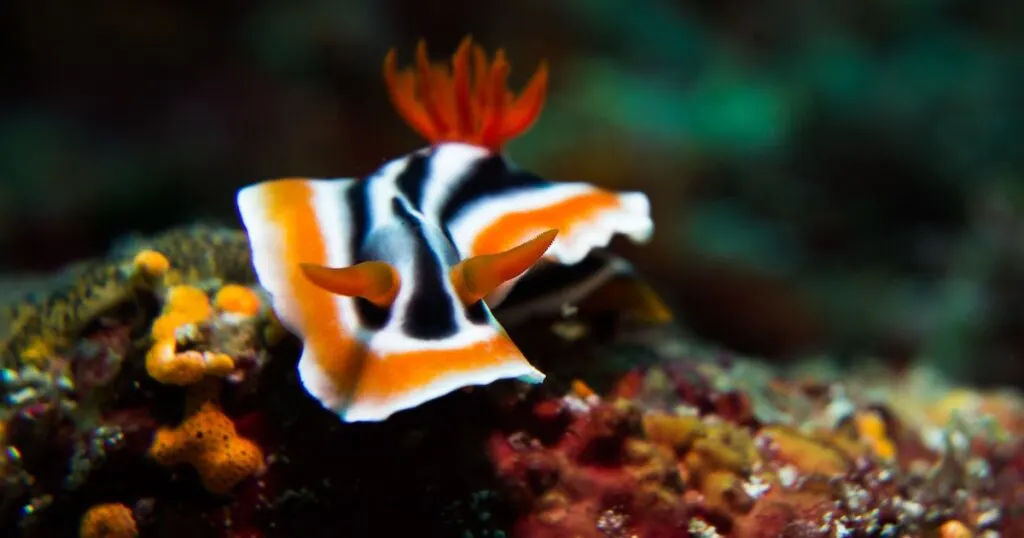
The critters in Anilao include both gorgeous, elegant, and frankly strange-looking creatures such as ghost pipefish and mantis shrimp.
You may spot:
- Hairy frogfish
- Bobbit worms
- Shrimps
- Crabs
- Cuttlefish
- Rhinopias
- Mimic octopus
- Seahorses (including pygmy seahorses)
- Tropical fish such as damselfish, angelfish, and clownfish
- Barracuda
- Reef sharks (common at deep dive sites with stronger currents)
- Schools of jack
- Tuna
- Triggerfish
- Blue-ringed octopus
- Squid
Muck Diving in Anilao
If you’re wondering exactly what muck diving is, it involves getting stuck into the muddy sediments at the base of the sea.
This is where the best and most unusual critters are found.
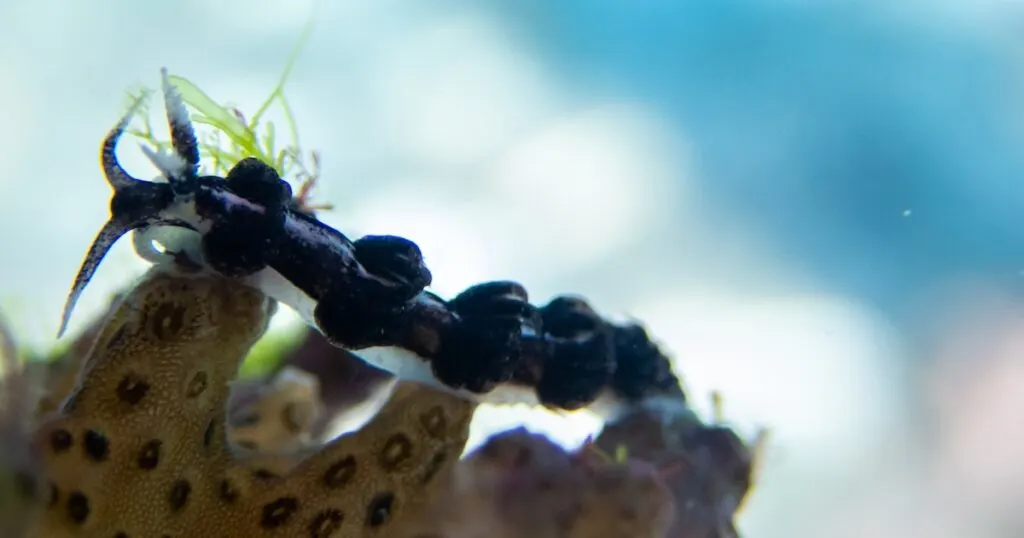
Secret Bay is the most famous muck dive site in Anilao.
However, the best muck dive sites are constantly changing because the currents change and shift sealife around every season.
Night Diving in Anilao
Going for a night dive in Anilao is practically a rite of passage for experienced scuba divers.
Many sea creatures go into hiding during the day and come out at night, so you’re in with a good chance of seeing something new on a night dive in Anilao.
You may see crab, shrimp, nudibranchs, jellyfish, seahorses, and a range of other unusual (or sleeping) sea creatures.
The most popular spot for night muck dives is Anilao Pier, where there are large numbers of interesting critters.
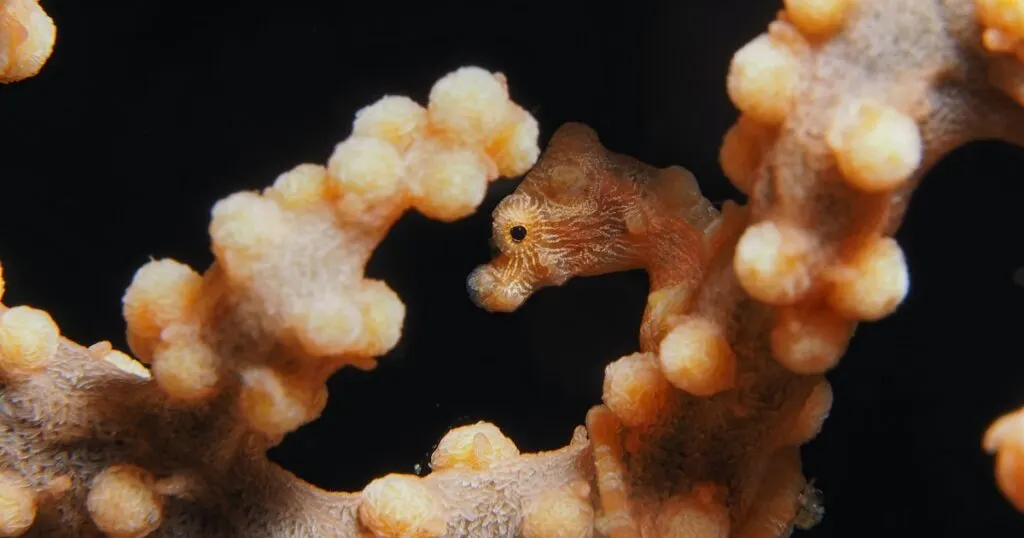
Blackwater Diving in Anilao
Blackwater diving is a type of night diving in Anilao which focuses on attracting interesting sea creatures using light sources which simulate moon rays.
Larval creatures are especially attracted to the lights such as jellyfish, which is why it’s important to wear stingers.
Some dive resorts in Anilao will arrange blackwater dives by placing weighted lines with special lights several metres apart in the water.
The lines attract sea creatures and scuba divers descend down the lines into the darkness.
Bonfire diving is another type of blackwater diving in Anilao. This type of diving involves descending 10-20 metres and placing lights on the seafloor to tempt larval creatures into the open.
Blackwater diving and bonfire diving are only suitable for experienced divers with at least 50 dives under their belts.
Many organisers require a certain number of dives before they will consider you for a blackwater or bonfire dive.
During a blackwater or bonfire dive, you might see creatures such as:
- Plankton
- Octopus
- Seahorses
- Jellyfish
- Moon jellyfish
- Flying fish
- Larvae
Is Diving Anilao Worth It?
Diving in Anilao has its pros and cons. For divers who want to see nudibranchs and critters, the area is a goldmine.
It’s without a doubt the best spot for muck diving in the Philippines and among the top three in southeast Asia.
Another huge benefit of diving in Anilao is that the area is so easy to get to from Manila and Manila Airport. There’s no need to take another flight to a different part of the Philippines.
All it takes to reach Batangas is two or three hours of driving, and tours also depart directly from Manila such as this full-day Anilao diving package.
The dive resorts in Anilao are professional and have all of the facilities and diving equipment you need to get underwater safely.
The instructors have lots of experience finding the best critters and nudibranchs, as that’s what the area is known for.
Diving Anilao is done on either a small speedboat or a small bangka boat. Bangka boats are traditional boats in the Philippines with large outriggers (almost like a fly’s legs).
A small boat fits around four divers at once, along with the diving crew.
The Best Time to Go Diving in Anilao
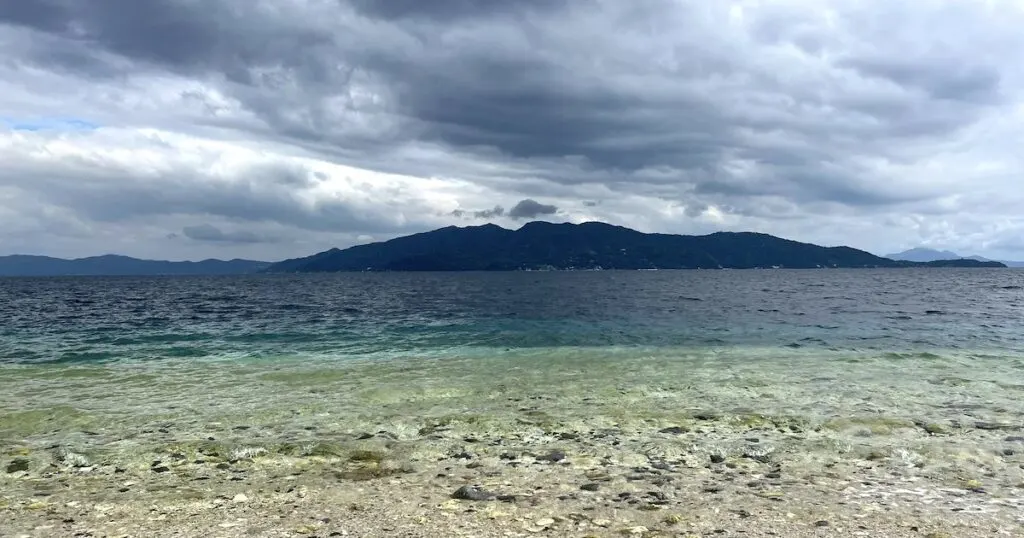
Anilao is a year-round diving destination. However, the diving conditions and weather change throughout the year.
The best time to go diving in Anilao is during the dry season (November to May).
There’s less rainfall, meaning that the underwater visibility is greater due to less run-offs. It’s easier to spot macro critters. The water is also warmer (around 26-30 degrees celsius).
The wet season (June to October) has a greater risk of rainfall and thunderstorms interrupting diving trips.
The visibility may also be affected at some dive sites. Nevertheless, the water remains warm despite the rain. Another benefit is that there may be less crowds during the rainy season.
How to Get to Anilao
The nearest airport to Anilao is Manila International Airport. Note that you can find some of the cheapest flights to Manila with AirAsia.
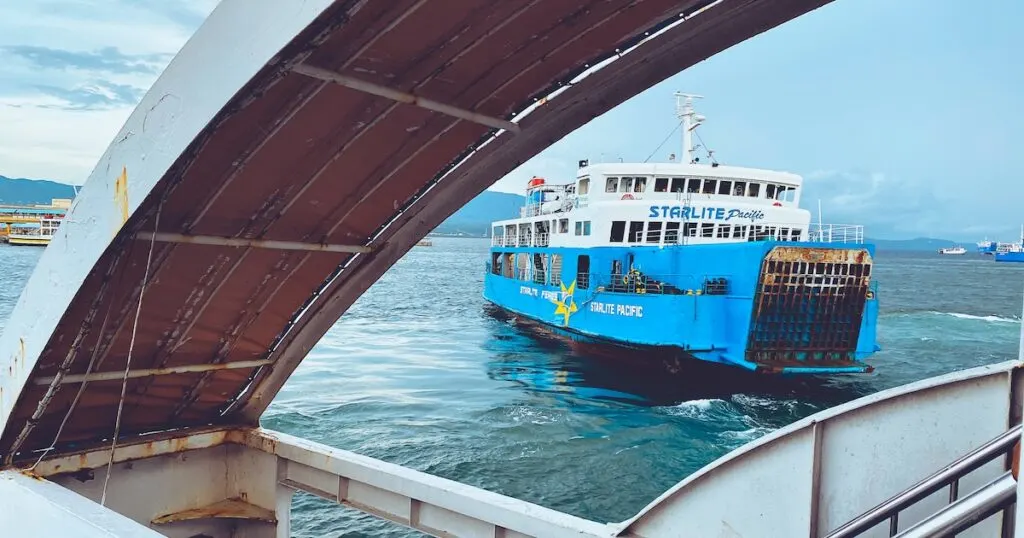
There are several ways to get to Anilao from Metro Manila or Manila Airport, the easiest method being to drive using your own car or a hire car.
Driving to Anilao takes approximately two hours depending upon the traffic. In heavy traffic, expect the journey to take three hours or more.
If you don’t want to drive to Anilao, you can consider taking a full-day Anilao diving package from Manila. The other option is to travel by bus.
How to get to Anilao by bus
When you’re travelling to Anilao by bus, it is best to depart in the early morning because traffic gets worse as the day progresses.
Factor in four to five hours for the bus journey because there are three different steps you must take to reach your resort, including a public bus, a jeepney, and a tricycle taxi.
1. Take the ‘Batangas City’ bus.
To reach Anilao, take one of the Batangas City buses. They depart Buendia, Cubao and Alabang and reach their destination within two hours depending upon traffic.
They depart every hour or so.
Note that the journey time between Manila and Batangas City should be two hours. Some buses may take three hours because they travel to Batangas City via Lipa.
If you don’t want to add an hour onto your journey, avoid these buses.
The bus ticket should cost between P120 and P200.
Whenever I’m in the Philippines, I book most of my transport on 12go. You can easily check the availability of buses from Manila to Batangas City and book online to ensure that you get a seat on a coach.
2. Take a jeepney from Batangas City to Anilao Port
Once the bus has reached its final destination in Batangas City, you need to continue your journey by taking the jeepney to Anilao Port.
The ticket should cost around P40.
It’s a shorter journey, taking approximately 45 minutes.
3. Take a tricycle taxi to your dive resort.
Anilao Port will have a line of tricycle taxis waiting. Arrange yourself a ride to your dive resort (having the address will come in handy).
For most resorts, the fare should be between P60 – P100.
Most of the resorts are within 10 minutes’ drive of the port.
Anilao Diving Resorts: Where to Stay
If you want to really get stuck into the Anilao diving scene, the best way is to stay at a diving resort.
Dive resorts in Anilao provide one or multiple day dives. A one-day dive usually consists of two early morning dives, lunch at the resort, and two additional dives in the afternoon and/or evening (a night dive).
Dive resorts are a good place to learn to dive. They’re also great for a more intense one or two days of diving.
Most resorts run tailored diving courses for beginner, intermediate, and advanced divers.
Most of the diving resorts in Anilao are rated four or three stars, so common resort facilities include a diving pool, recreational pool, restaurant, terrace, and sometimes a beachfront.
Dive trips departing from the resorts visit the most popular dive sites but may explore more unusual dive sites upon request. The dive sites visited always depend upon the weather and diving conditions such as currents.
Some dive resorts have a better reputation than others. Reading existing Google or Booking.com reviews of the resorts will help you to narrow down the best dive resort for you.
I have put together the following list of the best dive resorts in Anilao following my trip to Anilao. I have also thoroughly scoured the reviews for every dive resort.
As a luxury travel journalist, I have stayed in some of the best resorts around the world and therefore keep the list up-to-date with new openings.
Looking for hostels? Unfortunately, there aren’t any diving hostels in Anilao so you may want to look for a budget-friendly dive resort instead.
Best Overall: Eagle Point Beach and Dive Resort
Eagle Point Beach and Dive Resort is consistently rated the highest out of all of the dive resorts in Anilao Batangas.
This may be because it has a private, white-sand beach and 12-foot-deep reef pool to simulate the diving experience.
Or, it may be because of its affordable, professional diving trips to many of the best dive spots in Anilao. It is luxurious but affordable, and also offers introductory dives for beginners.
Best Luxury Dive Resort:
When it comes to Anilao’s luxury rankings, Buceo Anilao Beach and Dive Resort is the clear front-runner.
The four-star resort has a private beach lined with bangka boats and speedboats, two infinity-esque pools, and a team of diving instructors with an uncanny ability to discover the weirdest and most wonderful nudibranchs and critters around Anilao.
Best Budget Dive Resort: Planet Dive
Planet Dive is a two-star, budget-friendly dive resort which divers rave about for its affordable dives.
Established in 1999, it has a good balance between professionalism and affordable diving.
Good to consider:
Diving Anilao: The 6 Best Dive Spots in Anilao
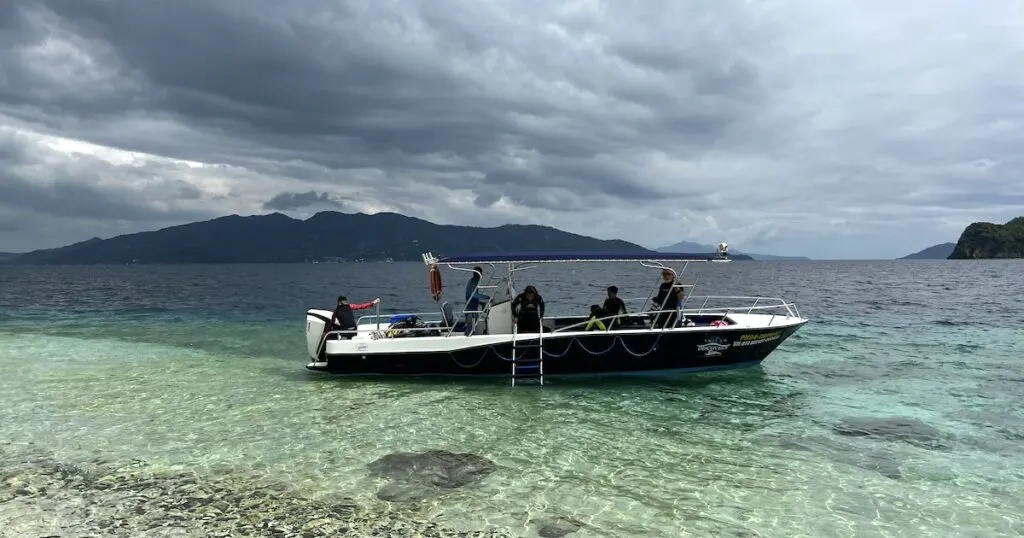
Speedboat parked next to Sombrero Island in Anilao
There are at least 30 dive sites in Anilao. The majority are scattered around Balayan Bay.
Most of the best dive sites in Anilao are only 10 minutes to half an hour’s boat ride from the main diving resorts.
1. Twin Rocks
Twin Rocks is considered to be the top tier dive site in Anilao. It features a bed of soft corals and mainly small fish, jawfish, and jacks.
This begins at 10 feet, all the way down to 130 feet. Night diving is very popular at Twin Rocks.
2. Secret Bay (Mainit Muck)
Secret Bay in southeast Anilao is considered to be the best muck dive site in Anilao. It’s also known as Mainit Muck. It consists mostly of sand.
Divers can look for creatures along the seafloor and a wall. The dive site is around 40 metres deep, but creatures can be spotted from around 5-20 metres underwater.
Therefore, it’s fairly shallow and well-suited to beginner divers. Plus, there are no strong currents.
Divers have spotted nudibranchs, mantis or Coleman shrimp, bobbit worms (at night), snake eels, wonderpus octopus, seahorses, and small fish at Secret Bay. Don’t expect beautiful corals and views; this is a muck dive.
Night dives are also popular.
3. Anilao Pier
Anilao Pier is a convenient dive site, as it is based directly off the town on Anilao’s north coast. It’s suitable for beginners, as the depth of the dive is only five metres.
It is a muck dive highly populated with critters. However, it’s also best to expect the unexpected. Octopus and stingrays are also regular visitors at Anilao Pier.
The pier is great for night diving, or if you’re not confident diving in the complete darkness, at sunset.
4. Cathedral
Cathedral is a reef on the west side of Anilao. It’s artificial: the live corals were moved onto two empty rocks at the dive site in a mission to attract more nudibranchs.
Now, the dive site is estimated to house at least a quarter of the nudibranch species found in Anilao. There are also lots of schools of small fish, such as butterflyfish, clownfish, pufferfish and surgeonfish.
A cement cross lies at the centre of the dive site between the two rocks.
5. Sombrero Island
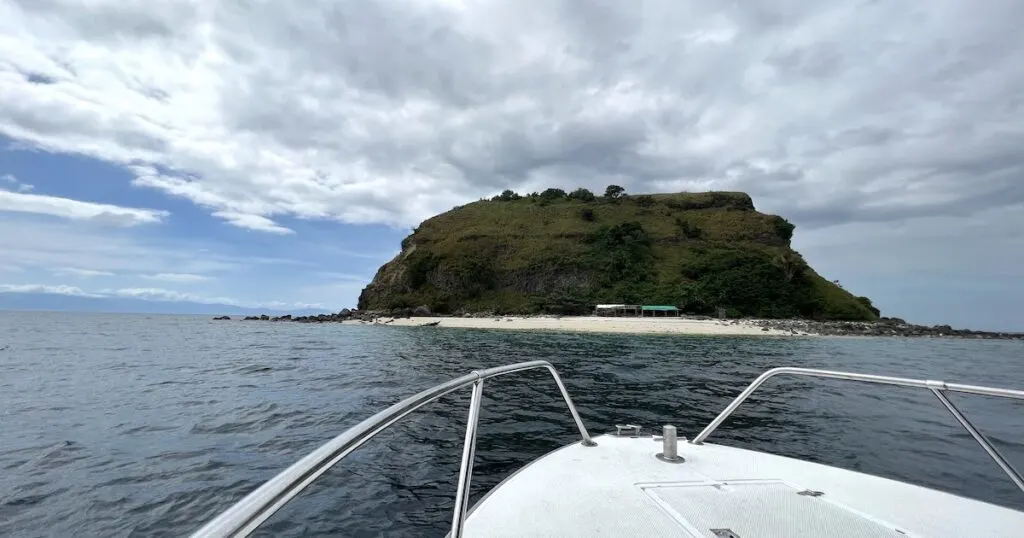
Sombrero Island is another of Anilao’s best diving spots. The island, which is in the shape of a sombrero hat, has a large soft coral garden, boulders, tunnels and drop-offs as deep as 20-25 metres.
Here, expect to see black coral, stingrays, and the occasional schools of fish such as rainbow runners and amberjacks.
6. Twin Rocks
Unusually for Anilao, Twin Rocks is a shore dive. Located at the south of the peninsula, it has a large coral garden and two large boulders which act as a home for nudibranchs, damsels, mantis shrimps, and porcelain crabs.
If you were hoping to see some bigger schools of fish, this is also a good place. Schools of jack and barracuda are often spotted. Turtles often make an appearance too.
How Much Does It Cost to Dive in Anilao?
The costs of diving in Anilao vary depending upon which resort you stay at. For the most accurate prices, check directly on your resort’s website.
However, the typical approximate cost of diving through a dive resort in Anilao is:
- Solo dive: P2,000 – P3,500
- Full Day of Diving with Food and Gear: P7,500 – P1,000
- Introduction to Diving: P1,500 +
- Shore Dive: P1,300 +
- Blackwater or night dive: P3,000
Costs are per person per dive.
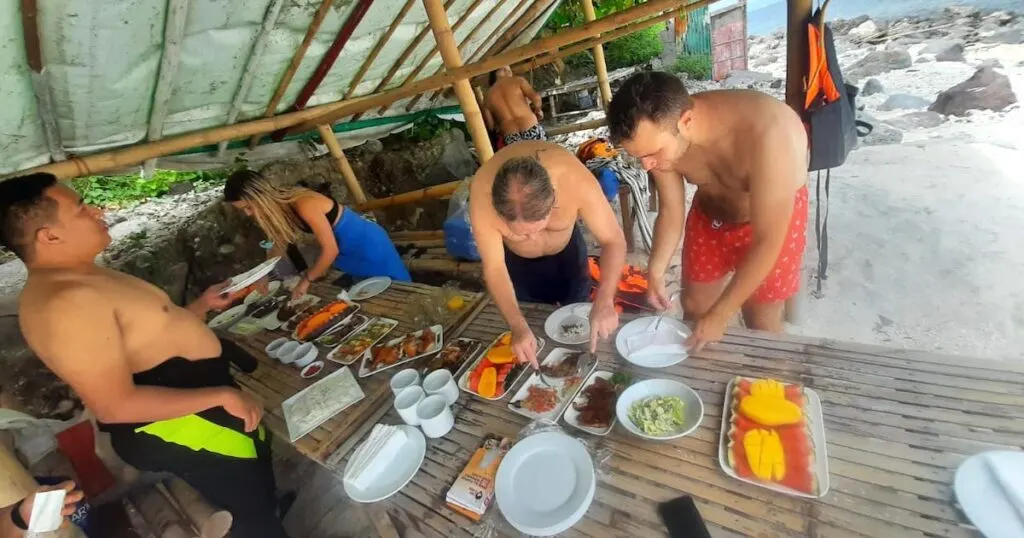
A typical buffet lunch on an Anilao diving trip
If you’re travelling solo, note that you will have to pay a fixed price for the boat and crew.
Usually, this is divided between multiple people in the group, making it more affordable. If you’re one person, you will have to shoulder the full cost. This is why dives are more expensive for a solo diver.
Things to Know Before Diving in Anilao
1. Diving conditions
Generally speaking, the diving conditions in Anilao are good. There is typically good visibility, meaning that it’s easy to spot fish and nudibranchs without cursing the ‘fog’.
The water temperature is between 26 and 30 degrees celsius, so it may be wise to wear a short wetsuit rather than a full-length wetsuit.
Currents are usually mild but may grow stronger during bad weather. Your diving instructor(s) will be able to advise upon the weather conditions and currents at the time of your dive.
2. Travel insurance
Not every travel insurance policy covers scuba diving in Anilao Batangas. You should check that your travel insurance policy covers the activities you have planned.
I recommend Staysure for single or multiple trips per year. Check the terms and conditions to see the exactly requirements for scuba diving coverage.
Suggested reading:
- The Best El Nido Tour: Guide to Island Hopping in El Nido
- Best Coron Island Hopping Tours
- What to Wear in Palawan and Island Hopping
- Gluten Free Food Philippines
FAQs
Solo dive: P2,000 – P3,500
Full Day of Diving with Food and Gear: P7,500 – P1,000
Introduction to Diving: P1,500 +
Shore Dive: P1,300 +
Blackwater or night dive: P3,000
There are over 30 dive sites in Anilao.
A typical dive site in Anilao is between 20 metres (70 deep) and 40 metres (130 feet) deep. Anilao Pier is only five metres deep.
Anilao is famous for its large nudibranch and critter populations due to its placement near the Verde Island Passage.

